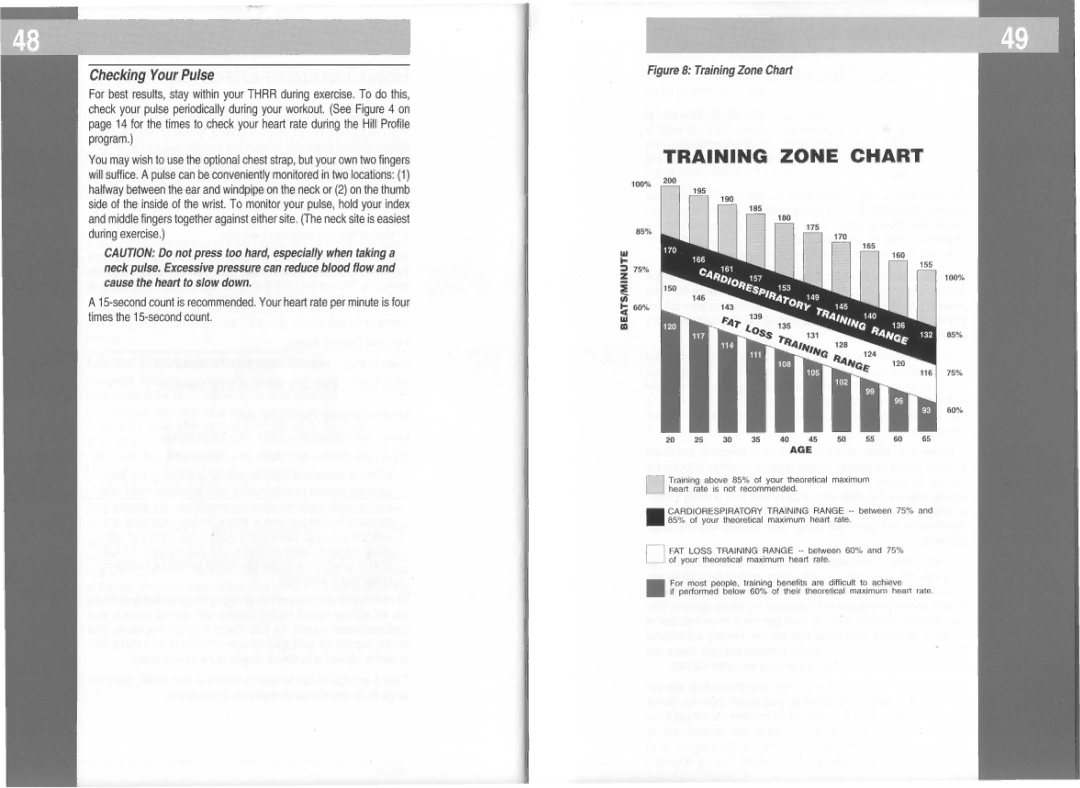
Checking Your Pulse
For best results, stay within your THRR during exercise. To do this, check your pulse periodically during your workout. (See Figure 4 on page 14 for the times to .check your heart rate during the Hill Profile program.)
You may wish to use the optional chest strap, but your own two fingers will suffice. A pulse can be conveniently monitored in two locations: (1) halfway between the ear and windpipe on the neck or (2) on the thumb side of the inside of the wrist. To monitor your pulse, hold your index and middle fingers together against either site. (The neck site is easiest during exercise.)
CAUTION: Do not press too hard, especially when taking a
neck pulse. Excessive pressure can reduce blood flow and cause the heart to slow down.
A
times the
Figure 8: Training Zone Chart
| TRAINING | ZONE CHART |
100% | 200 |
|
195 |
| |
|
| |
| 185 | 180 |
|
| |
85% |
| 175 |
|
| |
W |
|
|
I- |
| 155 |
:) 75% |
| |
Z |
| 100% |
~
in
~60%
W
In
85%
75%
60%
20 25 30 35 40 45 50 55 60 65
AGE
D Training above 85% of your theoretical maximum
. heart rate is not recommended.
CARDIORESPIRATORY TRAINING RANGE
D FAT LOSS TRAINING RANGE
. of your theoretical maximum heart rate.
For most people, training benefits are difficult to achieve
if performed below 60% of their theoretical maximum heart rate.
